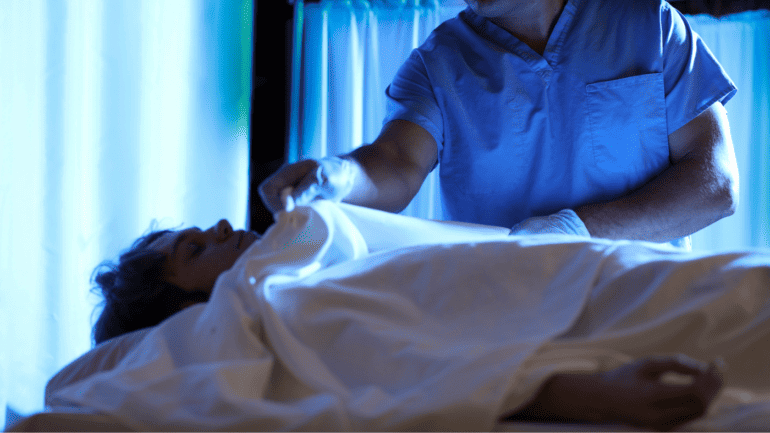Professor Jo Glengarry has worked extensively as a first-responding forensics expert on some of Australia’s most horrific crimes.
On this episode of Crime Insiders Forensics, Glengarry tells host Kathryn Fox how she works with police to determine the cause and circumstances of a death:
Arriving at The Crime Scene
When Glengarry arrives at a crime scene, she usually only has a general idea of what’s happened.
“Sometimes it’s easier for us to approach it with an open mind,” she says, “It’s quite nice for us to go in a little bit blinded about the circumstances so that we’re not led in one direction.”
While police and forensic scientists work closely to reveal the circumstances of a death, Glengarry says it’s important that forensics work independently at first:
“If I say it’s a stab wound and it looks like a serrated knife. And then I’m told afterwards, ‘by the way, we’ve recovered a serrated knife from the scene’, then that’s [a] much more powerful correlation,” she says.
Performing An Autopsy
During the autopsy, Glengarry says, “There’ll be myself and my technicians. And there’ll be a photographer from the police forensic sciences team in the room with me, and the homicide squad. Detectives will be in a viewing room,”
So, how long does an autopsy take? Glengarry explains how the number of hours depends on the types of injuries:
Delve into more episodes like these by downloading the free LiSTNR app, the home of crime podcasts.
